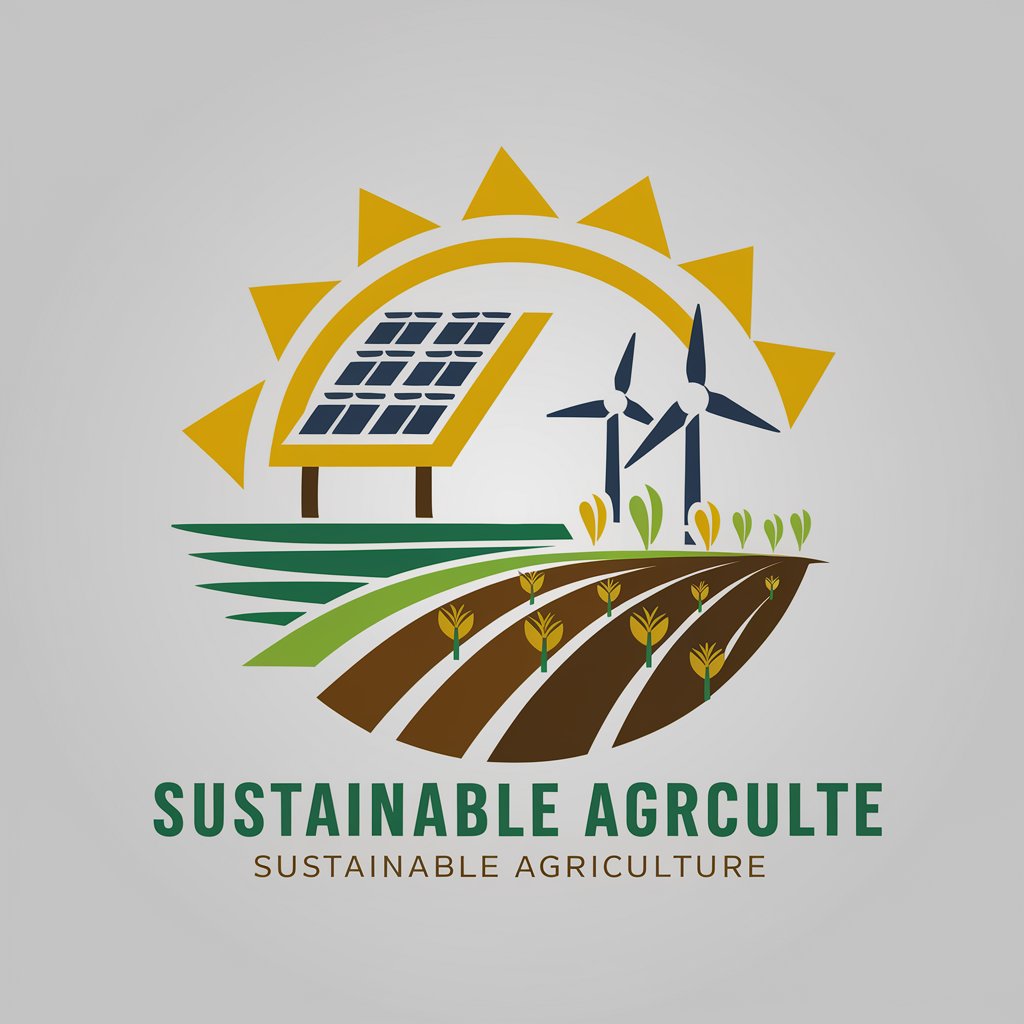Climate Smart Sustainable Agriculture Projects - Sustainable Agriculture Insights

Welcome! Let's explore sustainable agriculture together.
Empowering sustainable farming with AI
Can you explain the benefits of crop rotation for soil health?
What are some effective cover cropping strategies for small farms?
How can reduced tillage practices improve soil carbon sequestration?
What are the latest innovations in sustainable agriculture technology?
Get Embed Code
Overview of Climate Smart Sustainable Agriculture Projects
Climate Smart Sustainable Agriculture Projects are initiatives designed to integrate the concept of climate-smart agriculture (CSA) into farming practices. These projects aim to achieve three core objectives: increasing agricultural productivity and incomes, adapting and building resilience to climate change, and reducing and/or removing greenhouse gas emissions, where possible. They incorporate a variety of practices, technologies, and policies that are tailored to the local context, ensuring that agricultural systems can sustainably feed the world under the changing climate conditions. Examples include the implementation of crop rotation, cover cropping, reduced tillage, efficient water management, and agroforestry. These practices not only improve soil health and water efficiency but also enhance biodiversity and carbon sequestration, illustrating the multifaceted approach of CSA projects to address environmental, economic, and social issues. Powered by ChatGPT-4o。

Core Functions of Climate Smart Sustainable Agriculture Projects
Increase agricultural productivity
Example
Introduction of drought-resistant crop varieties
Scenario
Farmers in semi-arid regions adopt drought-resistant crops, ensuring food security and income stability despite erratic rainfall patterns.
Adapt and build resilience to climate change
Example
Implementation of water-saving irrigation techniques
Scenario
By using drip irrigation and rainwater harvesting systems, farmers in water-scarce areas can maximize water efficiency, reducing vulnerability to droughts.
Reduce greenhouse gas emissions
Example
Adoption of reduced tillage practices
Scenario
Farmers minimize soil disturbance, maintaining soil carbon stocks and reducing CO2 emissions, contributing to climate change mitigation efforts.
Enhance biodiversity and ecosystem services
Example
Establishment of agroforestry systems
Scenario
Integrating trees into agricultural landscapes diversifies habitats, supports wildlife, and enhances ecosystem resilience against pests and diseases.
Target User Groups for Climate Smart Sustainable Agriculture Projects
Smallholder Farmers
Smallholder farmers can significantly benefit from CSA practices by increasing their resilience to climate variability, improving productivity, and enhancing food security. These projects provide them with the knowledge and tools to adopt sustainable farming practices that are critical in the face of climate change.
Agricultural Policy Makers
Policy makers at national and international levels are key users, as they can incorporate CSA principles into agricultural policies and programs, promoting sustainable practices across larger scales and ensuring that supportive frameworks are in place for farmers to adopt these practices.
Agricultural Researchers and Academics
This group plays a crucial role in advancing CSA through research, development, and dissemination of new technologies and practices. Their work helps in understanding the impacts of climate change on agriculture and developing innovative solutions to mitigate these impacts.
Non-Governmental Organizations (NGOs) and International Development Agencies
NGOs and development agencies can utilize CSA projects as part of their efforts to support sustainable development and poverty reduction in rural areas. They provide technical assistance, funding, and training to implement these projects at the community level.

Guidelines for Using Climate Smart Sustainable Agriculture Projects
Begin with a free trial
Start by visiting a relevant platform offering insights into sustainable agriculture for a free trial, ensuring no login or subscription to premium services is necessary.
Identify your needs
Evaluate your project or research area to understand how climate-smart sustainable agriculture practices can be applied, whether for crop rotation, soil health, water management, or technology use.
Explore resources
Dive into available resources, tools, and case studies provided by the platform to gain insights into best practices and innovative approaches in sustainable agriculture.
Implement strategies
Apply the strategies and techniques learned to your agricultural projects, focusing on enhancing productivity, resilience to climate change, and environmental sustainability.
Monitor and adjust
Regularly monitor the outcomes of implemented practices, ready to adjust and optimize strategies based on performance data and evolving environmental conditions.
Try other advanced and practical GPTs
Alien Civilization GPT
Crafting Alien Worlds with AI

PowerShell Commander
Empowering Scripting with AI

MDR Navigator
Your AI-powered MDR and IVDR advisor

AskSoros
Empowering Investment Decisions with AI-Powered Reflexivity Insights

PDF 読み取りくん
AI-powered PDF Summarization and Translation

Whereas Writer
Crafting Formal Resolutions with AI

Inventeur Créatif
Powering Creativity with AI

法神
Empowering legal decisions with AI

Special Camping Recipes for Outdoor Cooking
Elevate Your Campfire Cooking with AI

Game Rules Assistant | Board & Card Games
Master any game with AI-powered assistance

Unique Surreal Shirt Studio
Transforming Apparel into Dreamy AI Art

Simpson Style Transformer
Transform Your Photos into Simpsons Characters

Frequently Asked Questions About Climate Smart Sustainable Agriculture Projects
What are Climate Smart Sustainable Agriculture Projects?
These projects integrate techniques and practices designed to increase agricultural productivity, enhance resilience to climate change, and reduce greenhouse gas emissions. They involve approaches like crop rotation, cover cropping, reduced tillage, and efficient water management.
How can technology be used in these projects?
Technology plays a crucial role through precision farming tools, satellite imagery, soil moisture sensors, and climate forecasting models to optimize resource use, monitor crop health, and predict environmental changes.
What are the benefits of implementing these practices?
Benefits include improved soil health, increased crop yields, enhanced farm resilience against weather extremes, reduced carbon footprint, and better water use efficiency.
Can small-scale farmers adopt these practices?
Yes, many practices are scalable and can be adapted to small-scale operations. Key is accessing knowledge, resources, and sometimes financial support to implement sustainable solutions effectively.
How do I measure the success of these projects?
Success can be measured through various indicators such as yield improvement, soil health parameters, water savings, and reduction in carbon footprint. Regular monitoring and adapting based on data is essential.
